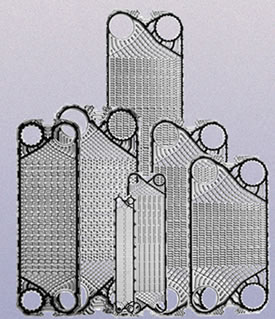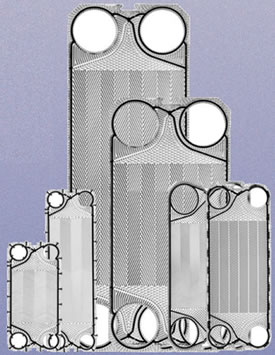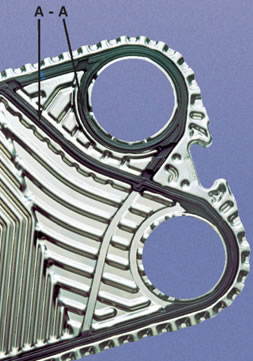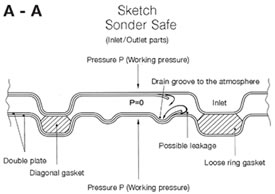
PLATE DESIGN
The construction of the inlet part makes a perfect distribution of the liquids across the heating surface. The inlet part is
increased and supplied with channels preventing “dead spots” bacteria in the plate heat exchanger. The inlet with channels
secures a strong inlet part with a minimum of contact points.
The inlet parts are constructed with a leakage drained zone fulfilling the 3A specifications. The plate pattern is constructed to
obtain a high thermal efficiency. The pattern is available in two designs with different angle sizes giving high respectively low
turbulent flow. Combining these in a plate pack an optimal plate composition can be calculated. The angle and fishbone
pattern has appeared to make the best heat transmission by a given pressure drop.
FREE FLOW PLATES |
Free Flow plates are designed for liquids containing fibers or other particles which Further advantages and Areas of Application
|
SEMI-WELDED PLATES |
Semi-welded plates are built up in plate cassettes. A plate cassette is 2 plates welded together by means of laser welding. The advantage by this construction is on the one side a welded plate channel and on the other side a traditional plate channel with gaskets making assembling and cleaning of this side easier. On the welded side there are two specially produced corner hole gaskets creating the tightening between the two cassettes. Thus the gasket is reduced to a minimum on the welded side.
|
SONDER SAFE PLATES |
The Sonder Safe plates consists of two thin flow plates stamped together. The two plates form a pair of plates which allows possible leaks to be seen from outside between the two plates. This prevents a mixing of the products and warns about internal leaks. APPLICATION AREAS
|



